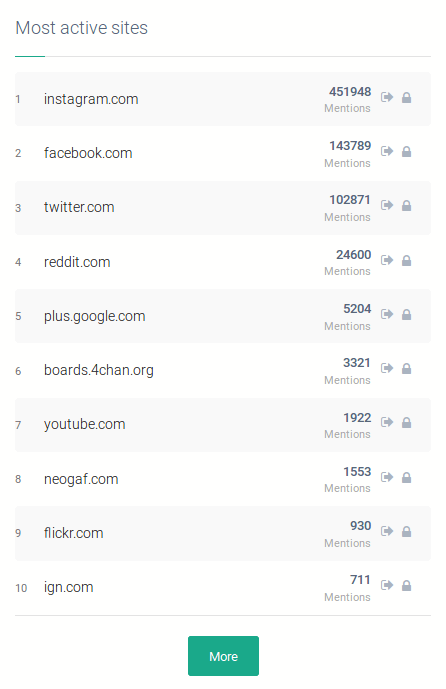9 Simple Steps to Creating Content Strategy
There are a number of things to consider when putting together a content strategy.
Generally speaking, most steps will fall under forming your general content plan, while most time will be spent actually creating the content, along with distributing the content through various channels.
Here are a few tips to help you create a strategy that works for you:
How do you form a plan?
Define your goals. Figure out what actions you want your readers to take after accessing your content. And how should they feel? Smarter? Intrigued? Empowered? Ready to take action (like buy or sign up)?
Nominate a leader. Whenever you create content, multiple perspectives can be enriching. However, too many cooks… and the release date can be considerably delayed in an effort to satisfy everybody’s needs.
The content may also end up sounding scattered, lacking one cohesive voice… and responsibilities can get pushed around, causing further delays.
The struggle is real.
You need a leader to take charge.
Make a schedule. There are so many different components to your strategy and a schedule can help you keep track of it all. Knowing when each part can be expected will help you set realistic goals.
Good content strategy is well-informed, and naturally, your plan will be based on things that you already know — and know well.
Here are a few things that every content writer should know (basically, everything I wish I’d known about content marketing from the get-go):
A lot of people tend to stay within their circles and don’t pay attention to their colleagues’ areas of expertise.
However, creating content strategy demands that you are aware of department workflows, top product features, who the resident experts are in any given topic, how to support good content with metadata, what kind of content is needed, where/when/how to distribute content, and what the company ultimately wants to communicate….
It’s a process; a lot’s involved.
Luckily, you watched that video I shared so you’re now well-informed about all of the above, and you take all of these things into account every time you form a plan.
Once you’ve defined your goals, know what kind of content you need, and have nominated a leader, then it’s time to focus on content creation.
What goes into content creation?

Content structure is an integral part of content creation. It can vary by industry, but the purpose of having content structure generally remains the same everywhere: well-structured pieces of content work like defined pieces of a puzzle, making it easy for you to put together and re-distribute on any platform.
Your audience appreciates structure because it makes the information you’re trying to communicate more accessible and easier to consume.
Your content creators love it because having a basic structure is like having a skeleton or frame to work with, so they don’t have to start from ground zero and think about how to frame every single new piece of content.
Just think about your favorite food blogs: the highest performing blogs often have very well-defined structure, making it easy for their readers to follow.
The structure of most food blogs typically consist of serving size and yield, ingredients, prep time, temperature/cooking time, an intro, instructions, and images. Pretty basic, right?
If that doesn’t sound very groundbreaking and innovative you can weave your creative juices into the content itself. The structure, however, should be clear and simple. Keep in mind, that:
“The average person gets bombarded with an estimated 285 pieces of online content on a daily basis.”
If your content comes up towards the end of that list, your reader won’t even have the energy to search for information.
Communicate value up front: make sure the value your content provides is easy to find. It doesn’t have to be fancy, it just has to be there — and in plain sight, not tucked away in the middle of your second-to-last paragraph.
Most importantly, avoid complicating things for your readers. Not only should your value be easy to find, it should be easy to understand.
What about content distribution?
There are two main aspects of content distribution: knowing where to distribute your content, and how.
This video shares some good tips on where to find the best websites to distribute your content:
Finding the right channels for distribution is crucial. You can pour hours of blood, sweat, and tears into creating the most amazing and useful content, but if you don’t get it to the right readers, it kind of defeats the purpose of having been created.
Social listening lets you monitor keywords that are relevant to your content so you can find the best channels for distribution. This ensures that your content will actually reach its target audience.
For instance, if I happened to be writing about my favorite source of caffeine, I would monitor keywords/phrases such as coffee, java, or cuppa joe to find platforms where coffee is often mentioned as a popular topic.
Monitoring these keywords and phrases shows us that, as it turns out, images are the most popular form of content for mentions of coffee — not text:

And Instagram is the most active site for all things coffee-related.

However, in terms of ‘the most influential sites’ (websites that get the highest amount of traffic), Instagram is #7.
Facebook, on the other hand, ranks #1 for influence and #2 for activity. This means that while FB users may not mention coffee as often as IG users, each mention on FB still manages to reach more people.

Data like this is extremely useful when you’re distributing content. And this is just the tip of the iceberg. Social listening tools like Brand24 can show you much more, depending on what you monitor and how you apply the data.
Tracking keywords isn’t just relevant to content distribution. It helps you find inspiration for content creation, track your competitors, monitor your brand reputation, engage your audience, and much more.
How you distribute content can vary for each platform. Different sites and devices require that you present your content in different ways.
Sometimes this refers to your tone of voice, and other times, how the content is displayed.
Some platforms still, require you to omit particular pieces of information, while others may demand that you include something extra.Flexibility is important.
It may sound contradictory, but a well-defined content structure gives you more flexibility.
When you have to modify your content for different platforms, content structure can make a huge difference in how you spend your time. Starting with a framed structure will help clarify things by singling out the essential pieces of information that are part of the frame, and the additional parts that are stylized, where you have free reign to edit per platform.
Of course, the tips above don’t cover every single detail – what about SEO? buyer personas? cross promos? We’ll cover other aspects later — some things are better in small doses, especially on a vast topic.
But now you know where to start. Implement these tips into your own strategies to optimize your results. And remember:
Try different strategies on different platforms. Don’t be afraid to break the mold while you’re on a quest to find out what works. Schedules and content structures don’t exist to make your content stiff and rigid; on the contrary, the more control you exercise, the more flexibility you’re left with.
Test the waters for different strategies early on, before you let yourself get stuck in a rut. Do it often to avoid collecting dust and falling back on outdated methods.
Keep track of your results so you can monitor your progress and find ways to optimize them.
Feel free to think of these steps as general guidelines while you learn more about creating content strategies!
Related articles
Top Reads
Brand Monitoring: Tools & Guide for 2026
Brand Awareness Strategy [The Ultimate Guide for 2026]
The Best AI Hashtag Tracker and Other Hashtag Tracking Tools [2026]
Social Media Reach: How to Measure & Improve It in 2026?
X (Twitter) Analytics Tools: The 10 Best to Try in 2026
Sentiment Analysis: What is it & Why do You Need it in 2026?
Share of Voice: Definition, Calculation, Tools [2026 Guide]
Brand Reputation Management: 6 Expert Tips for 2026
A Complete Guide to AI Social Media Analysis [2025]
How to See How Many Times a Hashtag Was Used on X (Twitter)
Start Social Listening!
Get the Brand24 trial and start social listening like a PRO.


